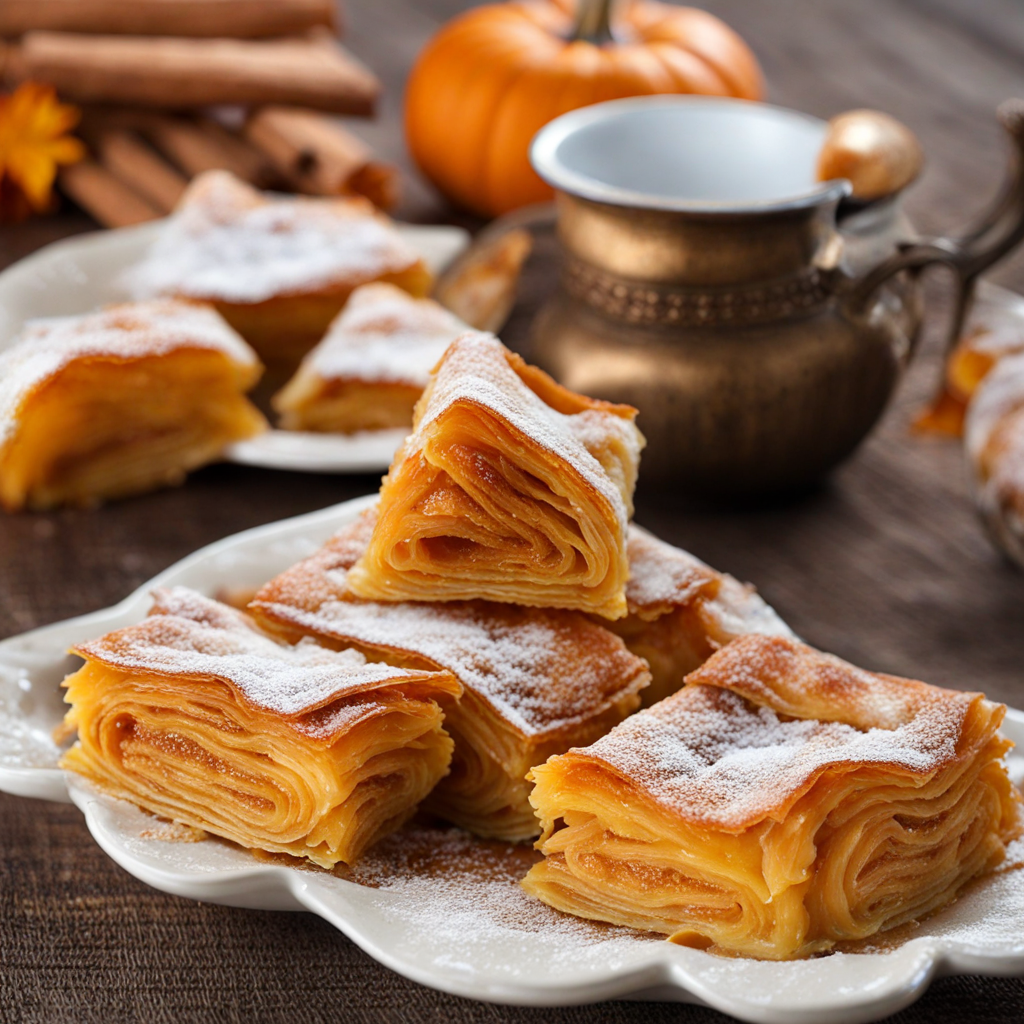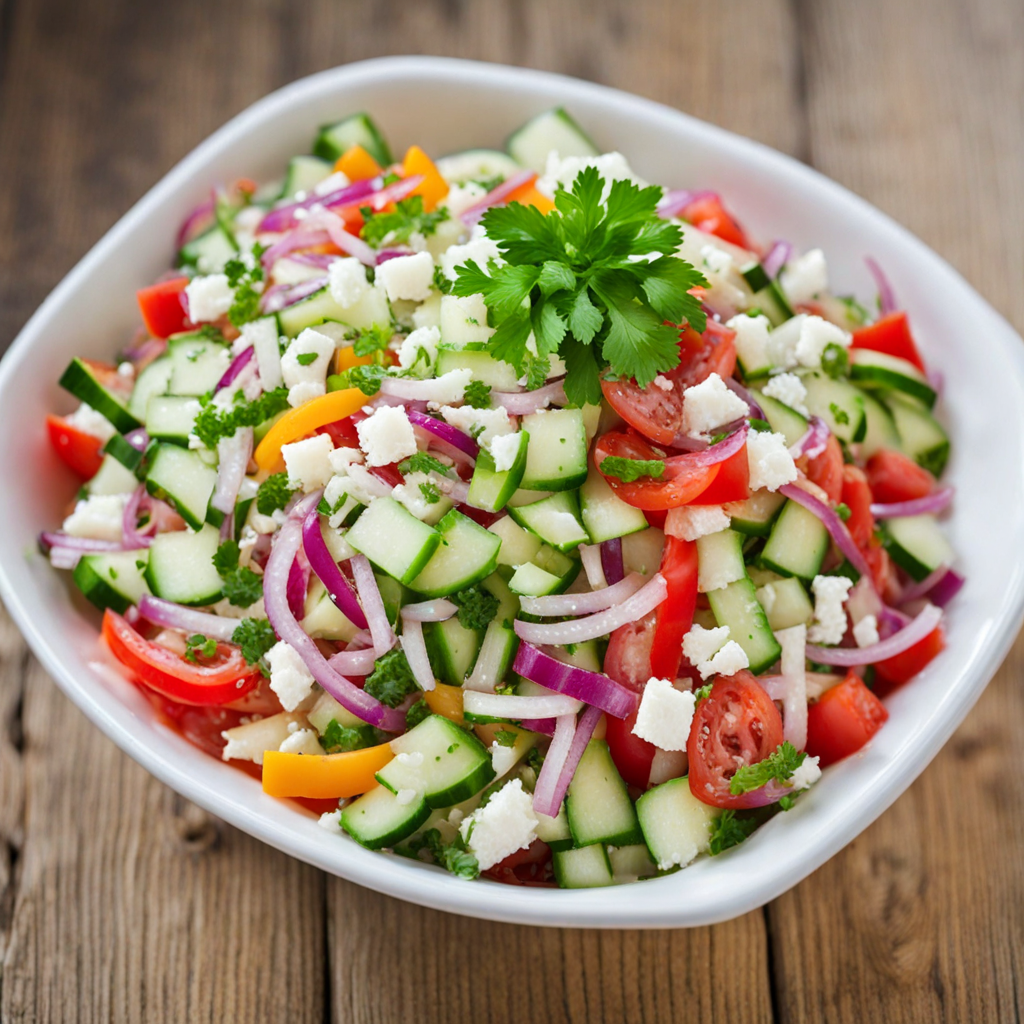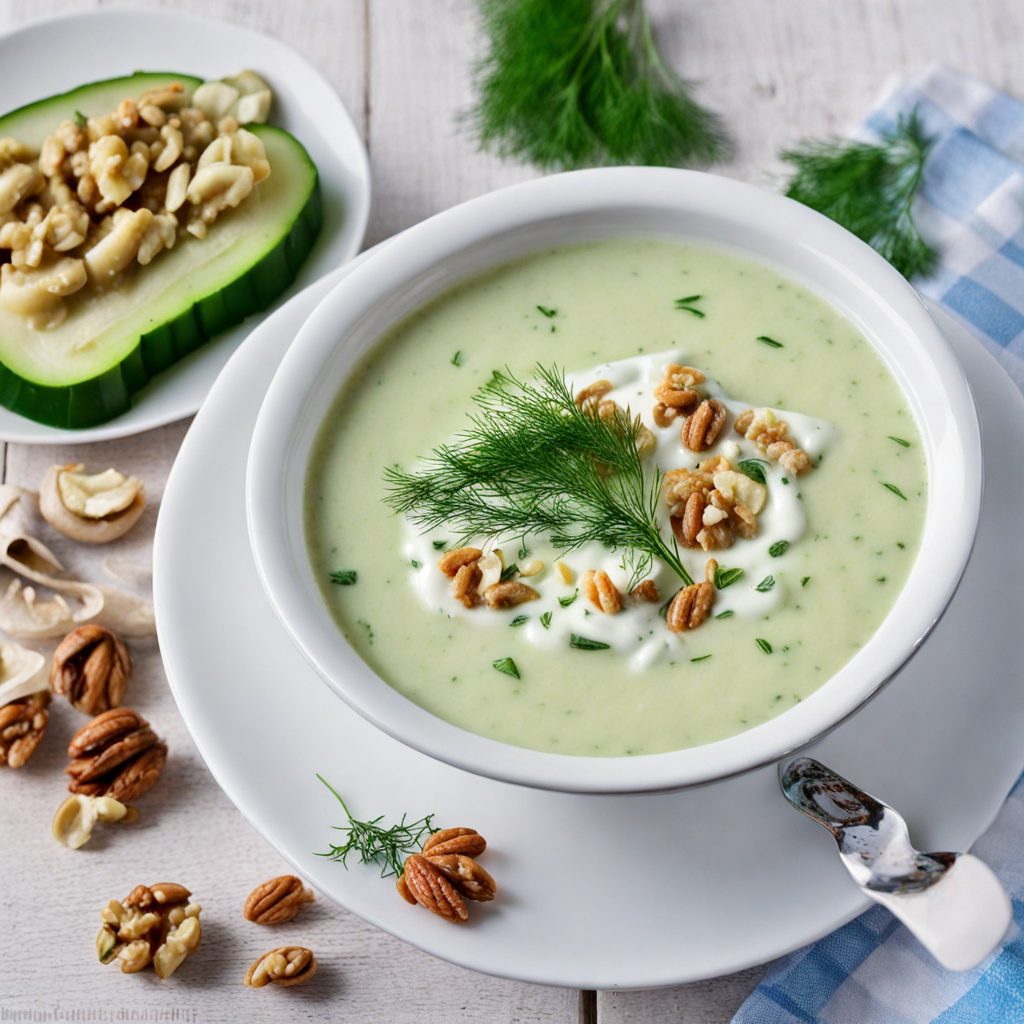Pumpkin Banitsa
Pumpkin Banitsa is a delightful Bulgarian pastry that combines the earthy sweetness of pumpkin with the rich, flaky texture of phyllo dough. This traditional dish is often enjoyed as a dessert or a comforting snack, showcasing the versatility of pumpkin beyond the usual savory applications. The filling typically consists of grated pumpkin, which is gently spiced with cinnamon and sugar, creating a warm and inviting aroma that is hard to resist. The balance of sweetness from the pumpkin and the slight crunch of the baked phyllo creates a textural contrast that is both satisfying and indulgent. As you take your first bite, the layers of golden, crispy phyllo will shatter, revealing the soft, spiced pumpkin filling within. The addition of eggs and yogurt in some variations adds a creamy richness that complements the sweetness of the pumpkin, enhancing the overall flavor profile. Sometimes, a sprinkle of walnuts or feta cheese is incorporated, introducing a nutty or tangy note that elevates the dish. Each region in Bulgaria may have its unique twist on the recipe, which adds to the charm of discovering this beloved local delicacy. Served warm or at room temperature, Pumpkin Banitsa is perfect for sharing during family gatherings or enjoying alone with a cup of yogurt or tea. It embodies the essence of Bulgarian comfort food, where simple ingredients come together to create something truly special. The vibrant orange filling, encased in delicate layers of dough, not only pleases the palate but also delights the eye, making it a wonderful addition to festive occasions or a cozy afternoon treat.
How It Became This Dish
The History of Тиквеник: A Taste of Bulgaria’s Culinary Heritage Тиквеник, a beloved Bulgarian dish, is essentially a pumpkin pie made with layers of thin pastry, often similar to phyllo, filled with spiced pumpkin and nuts. This dish encapsulates not only the agricultural bounty of Bulgaria but also the rich tapestry of cultural influences that have shaped Bulgarian cuisine over centuries. To fully appreciate тиквеник, we must explore its origins, cultural significance, and evolution through time. Origins and Early Influences The roots of тиквеник can be traced back to the agricultural practices of the Thracians, the ancient people who inhabited the region that is now Bulgaria. They cultivated various crops, including pumpkins, which were likely among the first vegetables introduced to the area. The use of pumpkin in cooking is not unique to Bulgaria; it has a long history across many cultures, especially in Europe and the Americas. However, the Bulgarian interpretation of pumpkin dishes has evolved into a uniquely local specialty. The introduction of phyllo pastry to Bulgaria is attributed to the Ottoman Empire, which ruled the region from the late 14th century until the late 19th century. The Ottomans brought with them a culinary tradition that included various layered pastries. This influence is evident in many Bulgarian desserts and savory dishes, including тиквеник. The blending of Ottoman techniques with local ingredients, like pumpkin, created a dish that is distinctly Bulgarian yet reflective of its historical context. Ingredients and Preparation Traditionally, тиквеник is made with fresh pumpkin, which is grated and mixed with sugar, walnuts, cinnamon, and sometimes raisins, all wrapped in layers of thin pastry. The pastry is usually made from flour, water, and a bit of oil or melted butter, rolled out into delicate sheets. This method of layering and folding is reminiscent of other Balkan pastries, such as baklava, but the filling of тиквеник distinguishes it from its sweet counterparts. The choice of ingredients can vary by region and season. In rural areas, it is common to use homegrown pumpkins and freshly harvested walnuts. The spices, particularly cinnamon, evoke the warmth of Bulgarian summers and the harvest season, making тиквеник a popular dish during autumn and winter festivities. Cultural Significance Тиквеник is more than just a dish; it is a symbol of Bulgarian identity and tradition. It is often prepared for special occasions, such as family gatherings, holidays, and religious celebrations. One of the most notable times for making тиквеник is during the feast of St. Demetrius, which falls in October. This celebration marks the end of the agricultural year, and many families prepare various pumpkin dishes to honor the harvest. In Bulgaria, food is deeply interwoven with social and familial bonds. Preparing тиквеник often involves multiple family members, from grating the pumpkin to layering the pastry, reinforcing communal ties and shared history. This communal aspect is particularly evident during Slava, a family celebration honoring the patron saint of the household, where тиквеник may be included among other traditional dishes. Regional Variations As with many traditional dishes, regional variations of тиквеник exist across Bulgaria. In some areas, the filling might include additional ingredients such as apples or even cheese, showcasing the adaptability of the recipe to local tastes and available resources. In the Rhodope Mountains, for instance, the use of sheep's cheese adds a savory twist to the otherwise sweet dish. In the northern part of Bulgaria, particularly in the region of Dobrich, local farmers have cultivated specific pumpkin varieties that are particularly sweet and flavorful, resulting in a richer filling. Each variation tells a story of the land and the people who inhabit it, emphasizing the connection between cuisine and geography. Modern Adaptations In contemporary Bulgaria, тиквеник has seen a resurgence in popularity as more people embrace traditional recipes and local ingredients. The rise of the farm-to-table movement has sparked interest in pumpkin cultivation, with many small farms growing heirloom varieties that are perfect for this dish. Additionally, the interest in healthier eating has led to variations that include whole grain pastry or reduced sugar, making тиквеник a more versatile option for modern diets. Moreover, the globalization of food culture has introduced тиквеник to a broader audience, particularly among the Bulgarian diaspora. Many Bulgarians living abroad prepare this dish to reconnect with their roots, sharing it with friends and family who may not be familiar with Bulgarian cuisine. Food festivals and cultural events often feature тиквеник, further solidifying its role as an ambassador of Bulgarian culinary heritage. Conclusion Тиквеник is more than just a delicious pumpkin pastry; it is a reflection of Bulgaria's rich history, agricultural traditions, and cultural significance. From its ancient origins among the Thracians to its evolution under Ottoman influence and modern adaptations, тиквеник embodies the resilience and creativity of Bulgarian culinary practices. As it continues to be cherished by families and celebrated in cultural events, this dish remains a testament to the enduring power of food to connect us to our past and to one another. Whether enjoyed at a festive gathering or as a comforting treat on a cold winter's day, тиквеник invites us to savor not just its flavors, but also the history and heritage that it represents.
You may like
Discover local flavors from Bulgaria







